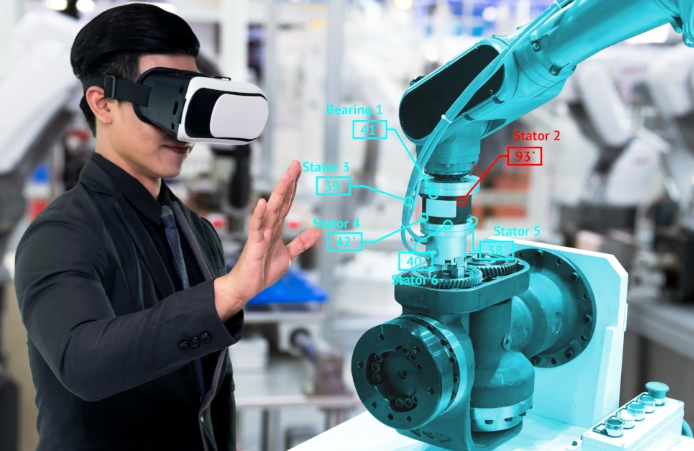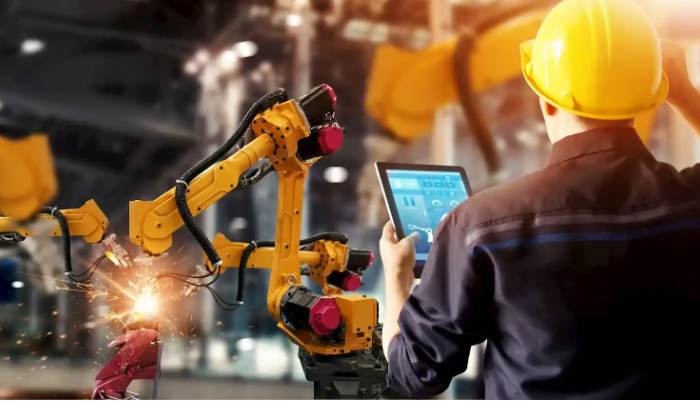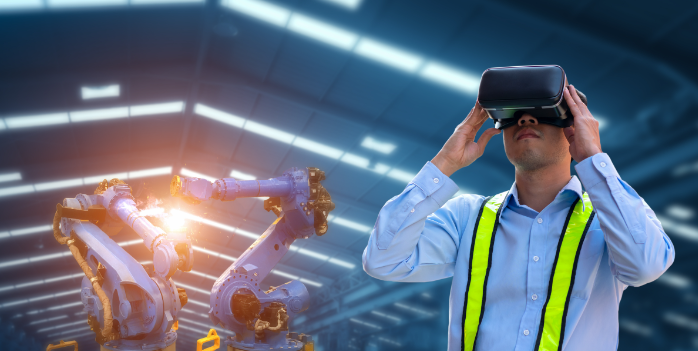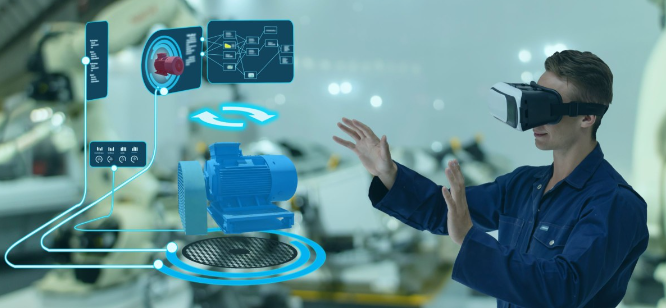How Could the Manufacturing Sector Utilize Extended Reality?
With the convergence of the digital and physical worlds, the manufacturing sector is at the brink of an exciting revolution. Extended Reality (XR), encompassing Virtual Reality (VR), Augmented Reality (AR), and mixed reality, presents a compelling opportunity for businesses to transform their processes and reap unprecedented benefits. In this comprehensive guide, we’ll explore how could the manufacturing sector utilize extended reality?
What are the Practical Applications of Extended Reality in Manufacturing?
1. Virtual Prototyping in Manufacturing
Virtual prototyping enables manufacturers to design and test products in a digital environment. This process helps in reducing costs and accelerating the design phase, ensuring that products meet the highest standards of quality.
2. Enhancing Productivity with Extended Reality
XR technology offers immersive training experiences, allowing employees to practice complex tasks without the risk associated with physical machinery. This boosts productivity by enhancing employees’ skills more efficiently.
3. Improving Quality Control with Extended Reality
The integration of AR in quality control processes offers a real-time overlay of information, enabling accurate assessment of products. This minimizes errors, saving time and money.
How is Virtual Reality being Used in the Manufacturing Industry?

Virtual reality is being used for simulations, product design, and collaborative remote work, fostering creativity and innovation. Its immersive nature is paving the way for enhanced human-machine interaction in manufacturing, opening new horizons in efficiency.
Can Augmented Reality Improve Productivity in the Manufacturing Sector?

Absolutely! Augmented reality applications in manufacturing are optimizing workflow by providing real-time information to the workers, enhancing decision-making and reducing downtime.
What Benefits does Extended Reality Offer for Training in Manufacturing?

Extended Reality offers immersive training scenarios, replicating real-world conditions. This makes training more engaging and effective, ensuring that employees are well-equipped to handle actual situations.
Future of Extended Reality in Manufacturing
The future of XR in manufacturing is bright, with constant innovations enhancing various aspects of the sector. It’s contributing to the growth of Industry 4.0, wherein smart factories utilize XR for increased automation and interconnectivity.
Extended Reality Devices for the Manufacturing Sector

Numerous XR devices are tailored to the manufacturing industry, from headsets to AR-enabled glasses. These tools are designed to be user-friendly and cater to the unique requirements of manufacturers.
XR-Based Maintenance in Manufacturing: A New Era of Efficiency
Maintenance plays a critical role in ensuring that manufacturing facilities run smoothly. With the advent of XR-Based Maintenance, traditional maintenance methods are getting a high-tech makeover.
1. Real-time Monitoring and Analysis
XR facilitates real-time monitoring and analysis of machinery. Technicians can use augmented reality to overlay essential data on their devices, allowing them to identify potential issues before they become critical problems.
2. Remote Assistance
Extended reality allows for seamless collaboration between on-site technicians and remote experts. This capability helps in addressing complex problems with precision and speed, minimizing downtime.
3. Simplifying Complex Procedures
With XR, complex maintenance procedures can be broken down into simple, step-by-step guides. This approach ensures accuracy and helps even less experienced staff perform intricate tasks with ease.
Human-Machine Interaction in Manufacturing: The Collaborative Future
Human-machine interaction is reaching new heights with the integration of extended reality in the manufacturing sector. Here’s how:
1. Immersive Interfaces
Virtual reality provides an immersive interface, enabling operators to interact with machinery in a virtual environment. This interaction helps in understanding complex processes, leading to better efficiency.
2. Safety Enhancements
By simulating real-world scenarios, XR allows workers to practice handling machinery in a controlled and risk-free environment. This training translates into improved safety in actual operations.
3. Real-time Feedback
Extended reality provides real-time feedback to operators, ensuring that any deviation from optimal performance is immediately corrected. This dynamic interaction leads to enhanced quality and efficiency.
Enhancing Productivity with Extended Reality: Practical Insights
How exactly does extended reality enhance productivity? Let’s delve into practical insights:
1. Virtual Training Modules
Creating virtual training modules saves time and resources, allowing new employees to be onboarded quickly and efficiently.
2. Workflow Optimization
With AR, employees can have access to real-time information and guidance, ensuring that tasks are performed accurately and swiftly.
3. Customized Solutions
Extended reality can be customized to fit unique manufacturing needs, ensuring that the solutions are in line with specific goals and targets.
Implementing Extended Reality in the Manufacturing Sector: A Step-by-Step Guide
Considering implementing XR in your manufacturing processes? Here’s a roadmap to success:
1. Assessing Needs and Goals
Identify the areas where XR can have the most significant impact, aligning technology with business goals.
2. Selecting the Right Tools and Platforms
Choose XR tools and platforms tailored to the manufacturing industry, considering factors like scalability, user-friendliness, and integration capabilities.
3. Training and Skill Development
Invest in training programs to ensure that staff can effectively utilize extended reality technologies.
4. Continuous Monitoring and Improvement
Implement continuous monitoring to assess the effectiveness of XR, making necessary adjustments to continually enhance performance.
Frequently Asked Questions on How Could the Manufacturing Sector Utilize Extended Reality?
How can Extended Reality Enhance Product Design and Prototyping in Manufacturing?
By allowing virtual simulations and iterations, extended reality speeds up the design process and enhances precision.
What Challenges does the Manufacturing Sector face when Adopting Extended Reality Technologies?
There may be challenges related to the adoption of new technology, including initial costs, training, and integration with existing systems.
How can Extended Reality Help Streamline Logistics and Supply Chain Operations in Manufacturing?
XR can provide real-time insights into supply chain operations, enhancing decision-making and efficiency.
Can Extended Reality be Used for Remote Collaboration in Manufacturing?
Yes, XR enables seamless remote collaboration, bridging gaps and fostering a unified working environment.
Also Read: Solo Max Level Newbie [Latest Chapters] 2023
Conclusion
Extended reality in manufacturing is not just a futuristic concept; it’s a present-day reality that offers a multitude of benefits. From enhancing productivity to improving quality control and fostering innovation, the implementation of XR technology is a game-changing opportunity for the manufacturing sector.
As we wrap up, we trust that this comprehensive exploration of “How Could the Manufacturing Sector Utilize Extended Reality?” has equipped you with the knowledge and tools necessary to navigate its complexities with confidence.






![Sniffies App Download [Free App Download] 2024 20 Sniffies App Download](https://deeplores.com/wp-content/uploads/2023/07/Sniffies-App-Download-768x432.png)
